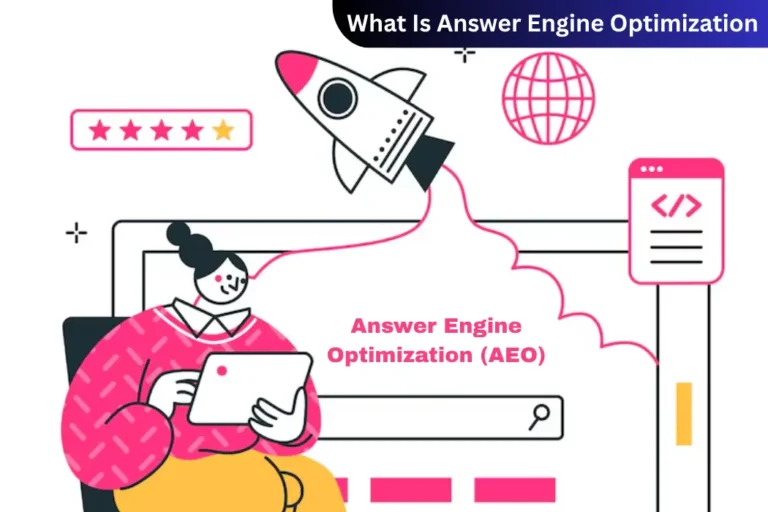AI is taking over the world. It transforms many areas, leading to better decision-making, cost savings, and increased productivity.
Everyone is talking about AI. It’s everywhere – from self-driving cars to intelligent assistants like Siri and Alexa. Developments such as OpenAI’s Dall-E, which generates images from feedback, and DeepMind’s AI, which uses them to predict protein structures, attest to the technology’s incredible possibilities.
Natural language processing development allows the use of chatbots and advanced search engines. Want to get into AI action? You will need to learn the right languages.
Here are the top 10 languages for AI development.
10 Best AI Development Programming Languages
Python
Python is the clear winner due to its data visualization and analytics capabilities. It’s easy to learn and use, making it perfect for both newbies and pros. You can hire Python developers to develop scalable, secure, enterprise-level web apps.
Here’s why:
- Python syntax is a breeze. Instead of wrestling with complex code, you purely focus on solving AI problems.
- Python has a ton of libraries for artificial intelligence. This includes TensorFlow, Keras, and PyTorch. These greatly facilitate complex artificial intelligence and machine learning.
- The Python community is huge and super active. Once inside, you will find plenty of help online.
Use Cases:
- Developing Django-based web applications
- Building TensorFlow models for neural networks
- Automating tasks with Selenium
- Creating interactive data visualizations with Plotly
- Implementing Flask RESTful APIs.
R
R is a top language for statistics and data visualization. So, it’s a must for AI development.
Moreover, here’s what makes it great:
- R is perfect for crunching numbers and analyzing data. It’s critical for AI research.
- R has awesome graphics tools, like ggplot2, that help see what’s happening with data.
- It can deal with huge amounts of data that are necessary for training AI models.
Use Cases:
- Conducting linear regression analysis
- Generating ggplot2 graphics for data visualization
- Performing survival analysis with the survival package
- Developing Shiny web applications for data interaction
- Executing cluster analysis with the cluster package.
Java
Java is super flexible and works on almost any device.
Also,
- You write code once and use it anywhere, at any time, that too unlimited number of times. All you need is a Java Virtual Machine (JVM) on your machine to implement it.
- Java’s complex memory management and error handling make it perfect for large AI projects.
- It also has helpful frameworks like Deeplearning4j for AI and deep learning.
Use Cases:
- Creating Android apps using Android Studio
- Developing enterprise applications with Spring Boot
- Implementing RESTful services with JAX-RS
- Running financial algorithms on Hadoop clusters
- Utilizing Java EE for large-scale business applications.
C++
You can use C++ for its functionality and effectiveness. Therefore, this is important for creating highly-powered AI systems.
Additionally, it offers the following features:
- C++ is fast, making it suitable for real-time AI applications.
- C++ gives you control over memory usage, allowing the AI to modify the algorithm.
- An example of complex AI application is game development. It is also ideal for robotic systems.
Use Cases:
- Developing AAA video games with Unreal Engine
- Implementing low-latency trading systems
- Writing firmware for IoT devices
- Conducting computational fluid dynamics (CFD) simulations
- Creating 3D rendering engines
JavaScript
JavaScript is the language you use to create websites. It is also useful for artificial intelligence (AI) development. This is especially useful for web-based AI applications.
JavaScript makes AI great here:
- It’s perfect for web integration – you need it for AI-powered websites.
- You can use cool libraries like TensorFlow.js. This makes the AI model more efficient in your browser.
Also, JavaScript supports asynchronous programming. It allows you to become a multi-tasker. When it comes to developing AI for websites, JavaScript is everywhere. We have talking chatbots, recommendation machines, and interactive user interfaces.
Use Case:
- Building dynamic user interfaces with React.js
- Developing server-side applications with Express.js
- Creating cross-platform mobile apps using Ionic
- Implementing client-side form validation
- Designing real-time applications with Socket.io.
Prolog
Prolog is well-suited for developing logic-based AI applications. It is declarative rather than a set of commands.
Additionally, it offers the following features:
- Prolog is great at implementing logic. This is perfect for AI apps that need to be understood and worked with.
- It is super effective at finding patterns. It helps in natural language processing and AI.
- The prolog backtracking feature allows the AI to try different solutions.
So, how do you use Prolog?
You can create expert programs with Prolog. Additionally, natural language processing and AI-based rules help.
Use Cases:
- Writing logical inference engines
- Building natural language understanding systems
- Creating automated theorem provers
- Developing knowledge-based systems
- Implementing AI for game development.
Lisp
It’s one of the oldest programming languages around and it has made a huge contribution to the development of AI.
Here’s what makes Lisp special.
- It’s terrible at symbolic math, which is great for artificial intelligence.
- Lisp is super flexible. Its grammars and macrosystems enable the creation of new grammar structures.
- It’s perfect for rapid prototyping, a must for AI research.
Besides, Lisp has learned some pretty awesome tasks recently. For example, it helps in AI research and natural language processing.
Use Cases:
- Writing AI algorithms for game development
- Developing symbolic algebra systems
- Implementing DSLs (Domain Specific Languages)
- Building emacs extensions
- Prototyping complex AI systems
Julia
Julia is an excellent language. It’s a combination of math and statistics, making it ideal for AI.
Additionally, it offers the following features:
- It is fast, comparable to C++, which is important for large AI computations.
- Julia’s grammar is like mathematical notation. It makes it accessible to scientists and mathematicians.
- It supports both parallel and distributed computing. This AI model is useful for training.
Use Cases:
- Writing high-performance code for numerical optimization
- Implementing deep learning models with Flux.jl
- Developing parallelized algorithms for large datasets
- Conducting simulations in computational physics
- Creating data analysis pipelines with DataFrames.jl.
Scala
Julia is an excellent language. It’s math and statistics, making it ideal for AI.
Additionally, it offers the following features.
- Got concurrent with Scala. This means you can do things faster, making it perfect for AI jobs that require super-skills.
- Scala runs on the same Java Virtual Machine as Java, so you can access all the Java tools you need.
- It is also in programming. This makes it easier to write those complex AI algorithms.
Therefore, you can use Scala for big data processing and distributed computing. Plus, you can also use it with AI frameworks like Apache Spark.
Use Cases:
- Processing big data with Apache Spark
- Developing reactive applications with Akka
- Implementing functional programming paradigms
- Building scalable microservices with Play Framework
- Writing concurrent software with Futures and Promises.
Haskell
Haskell is a unique programming language based on functional programming. It has a lot of settings and is good with numbers, making it super accurate.
Additionally, it offers the following features.
- User functionality always gives the same result. This helps while building AI-enabled projects.
- Haskell helps reduce code complexity. This means your code is more reliable.
- Haskell’s lazy evaluation allows AI algorithms to run faster. It only does the math when it matters.
Moreover, it is also great for developing algorithms. This needs to be super accurate with numbers.
Use Cases:
- Verifying software correctness with QuickCheck
- Designing purely functional data structures
- Writing compilers and interpreters
- Implementing financial contracts with Actus
- Developing blockchain protocols with Plutus.
Conclusion
So you’re trying to choose the right AI programming language for your project?
Start by determining what you need and what kind of language will work best for you. I recommend you go through all the trending languages mentioned above to make a clear decision. Remember, languages have their strong coats.
Look at what each language can do, and you will find the right one for your project, be it either a simple chatbot or a super-smart autonomous system.
Trust me, the right language makes a huge difference!






